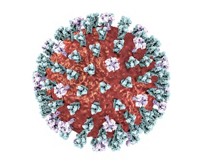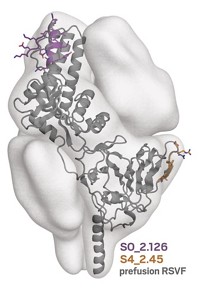Advertisement
Grab your lab coat. Let's get started
Welcome!
Welcome!
Create an account below to get 6 C&EN articles per month, receive newsletters and more - all free.
It seems this is your first time logging in online. Please enter the following information to continue.
As an ACS member you automatically get access to this site. All we need is few more details to create your reading experience.
Not you? Sign in with a different account.
Not you? Sign in with a different account.
ERROR 1
ERROR 1
ERROR 2
ERROR 2
ERROR 2
ERROR 2
ERROR 2
Password and Confirm password must match.
If you have an ACS member number, please enter it here so we can link this account to your membership. (optional)
ERROR 2
ACS values your privacy. By submitting your information, you are gaining access to C&EN and subscribing to our weekly newsletter. We use the information you provide to make your reading experience better, and we will never sell your data to third party members.
Infectious disease
Llama antibodies may spell human flu treatments
Researchers engineer broad-acting antibodies to fight multiple types of flu
by Megha Satyanarayana
November 3, 2018
| A version of this story appeared in
Volume 96, Issue 44
An international group of humans have teamed up with a South American camelid to try to build a better flu treatment. The research team, led by Ian A. Wilson of Scripps Research, California, and Joost A. Kolkman of Janssen Pharmaceutica, engineered antibodies extracted from llamas that were immunized against flu viruses. The antibodies are broadly neutralizing, meaning they can attack different strains of influenza A and B based on common domains in a viral surface protein called hemaglutinin, Wilson says. The engineered antibodies contain broadly reactive binding domains from different antibodies stitched together. But why llamas? Their antibodies could be more effective in attacking flu viruses in humans than humans’ own antibodies are, Wilson says, because they are smaller than our antibodies and may fit into tight recesses on the surface of the flu virus, accessing regions that our antibodies may not be able to. The work is still in early stages, Wilson says, but when the team tested the treatment in mice exposed to the flu, the artificial antibodies increased the animals’ survival rates over animals not treated with the antibodies. The team is now evaluating how best to deliver the antibodies—either intranasally or through the type of machinery used in gene therapy, in which cells in the body get coopted to make the antibody when it’s needed.





Join the conversation
Contact the reporter
Submit a Letter to the Editor for publication
Engage with us on Twitter